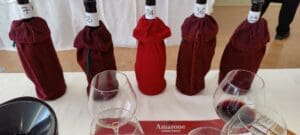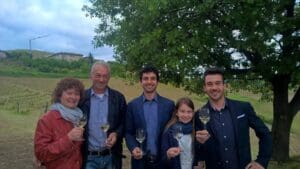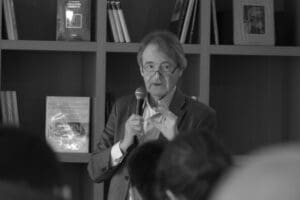A few times I was told that trailblazers often ended up in a fiery ending. They can’t catch up with trends they started nor were they willing to change with tides. But having heard Vasse Felix mentioned so often, I am pretty sure it hasn’t ended its reign as one of the most prominent wineries in Margaret River. Seeing their chief winemaker gave a sense of why things are the way it is.
In the mid 1960s, Dr Tom Cullity arrived in Margaret River as a practising cardiologist for the Royal Perth Hospital. Not quite what we know today, Margaret River then was a sleepy town with its residents struggling to cope with the dairy industry. The town was so desolated, he noted “you could fire a gun down the main street and kill nobody.”
An article on the viability of wine making in Margaret River set, then ignorant, Tom Cullity on an obsessed quest for vine growing. Written by Dr John Gladstone and published in “Journal of the Australian Institute of Agriculture”, the article detailed the region’s potential of growing vines to make quality wines. An idea which no one had given serious consideration. But with that, Tom founded Vasse Felix.
So in 1967, the first Margaret River vineyard started with a modest eight acres planted to Riesling, Cabernet Sauvignon, Shiraz and Malbec.
The estate was named after the French sailor, Timothee Vasse, who was lost overboard along the sea-coast outside south-western Australia. Felix, which means “lucky” or “happy” in Latin was appended to bless the vineyard. Ironically, the first vintage in 1971 was a disaster, no thanks to rot and birds. Luckily the later years saw Vasse Felix gaining more attention from Australia and abroad. Soon, many followed their steps and the region grew and bloomed into what it is known today.
With her hair all fully let down, Virginia Willcock the chief winemaker for Vasse Felix since 2006 was a charmer with words. As she shared anecdotal stories throughout the lunch, I can easily sense her underlying no-nonsense attitude towards quality.
Virginia’s tends to her wines like mother to her babies. Adopting a balance of nature and nurture, she believes her role is to provide a facility for maturation and prevent wines from going astray. As the Gourmet Traveller’s Winemaker of the Year in 2012, she gave credits to those who had come before her.
Over the lunch, we were introduced to the Vasse Felix’s flagship products, Heytesbury series. Representing the true expression of Vasse Felix, it amounts to one per cent of the total production. The white is a Chardonnay that went through wild yeast fermentation with minimal malolactic fermentation to keep the slightly tart structure. Avoiding the broad, weighty and powerful style of yesteryear. The red, a blend from Cabernet Sauvignon and Malbec, with a high proportion of Petit Verdot.
Heytesbury Chardonnay 2012
Restraint on the fruits, this wine had an obvious display of oak and butter. Palate was more lively than expected, with a good angular touch from the acidity structure. After aeration the wine opened up to a mineral oriented note and rich rounded palate.
Heytesbury Chardonnay 2011
Complex notes of chalky mineral, slight hint of peaches and ripen pineapples with very light touch of oak. Medium bodied, lively acidity, and good long finish. A wine I would regard as pure, both nose and palate.
Heytesbury red 2009
Impression of forest lingers in my mind from the sweet perfume scent of dried earth. Balance palate with ripen tannins and vibrant welcoming acid.
Heytesbury red 2010
Smoky, oak influence and cigar-like notes while the underlying fruit was subtle. Palate was juicy with mouth coating tannins and good acid to carry off.
Cabernet Sauvignon 2010
Linear direct varietal expression without the sensation of explosive alcohol (14.5%). Intense notes of black fruits and bell peppers. Firm tannins and bright acid. In conclusion, absolute delicacy.
Cabernet Sauvignon 2001
Matured nose of tobacco, dried tea leave and dried plums. Good sweet tannins with fresh acidity. Great impression of aged Cabernet Sauvignon. Extended cellaring is a challenge when it is so palatable now, hard to resist.



